The most influential design school in history, the Bauhaus, was founded 100 years ago by visionary German architect Walter Gropius. There, mathematical principles and engineering rigour were applied to fine art, craft and architecture. The school pioneered a splendid amalgamation of science and art.
The Bauhaus aesthetic depended above all on geometric forms, a reflection of machined design and mechanical engineering. It deployed modern industrial materials such as tubular steel and concrete. Yet it was also significantly inspired by nature — a salient source of Bauhaus glory, whether manifested in graphic design, weaving, carpentry, glass, metalwork or wall painting.
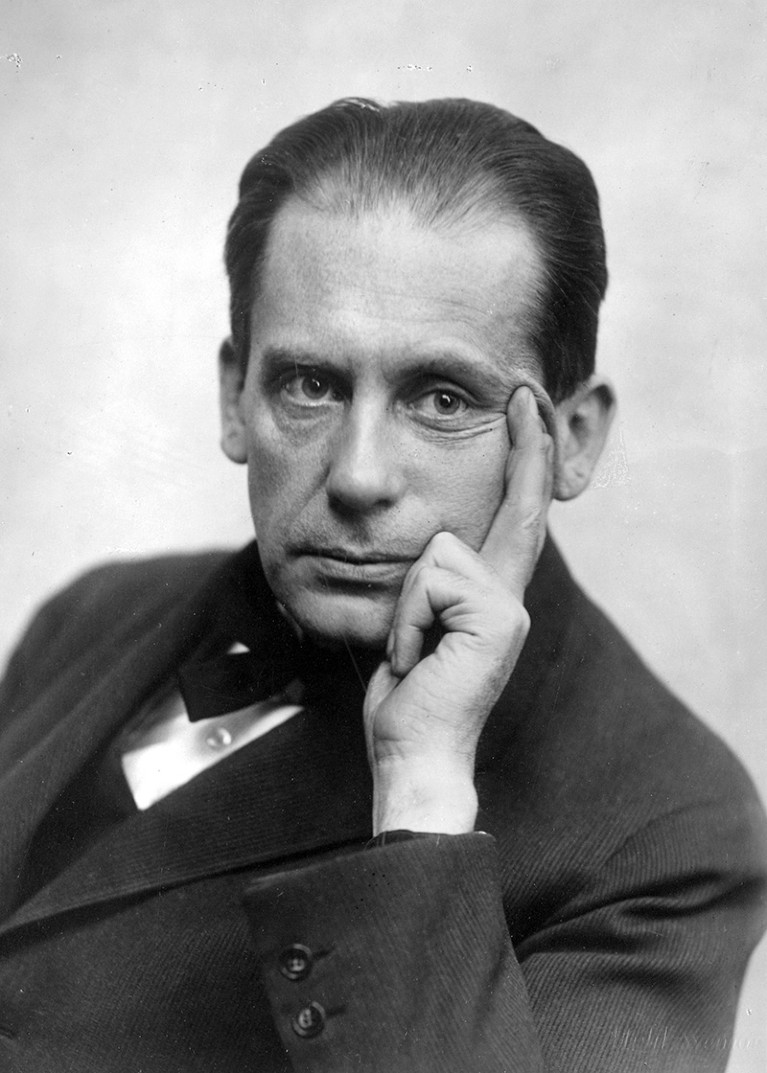
German architect Walter Gropius founded the Bauhaus school in 1919.Credit: Louis Held/Bauhaus-Archiv Berlin
The school was born in tumult. In 1916, as the First World War raged, Gropius left the front on temporary leave for Weimar in Germany. He had been invited to teach architecture at the Grand-Ducal Saxon Academy of Fine Art, which would replace the recently closed School of Arts and Crafts. When Gropius returned to his army camp, he began to develop his ideas for an academy that would weld craft to the fine and applied arts.
While studying wartime tools and technologies — guns, cannon and other products of industry — he formulated his programme. He would call his school the Bauhaus: literally, ‘building house’, crisp and apt. It would develop household objects from furniture to tableware: ornament-free, functional and intended for mass production. The school’s workshops would be laboratories where students would gain “an equal command of technology and form”. Unlike the pretentious aesthetic then reigning in Berlin, Bauhaus designs would fulfil real needs. Functionality determined form and governed aesthetic decisions.
Gropius thought scientifically. He encapsulated his philosophy in a 1937 article in The Architectural Record, where he wrote that design demands “an intimate knowledge of biological, social, technical and artistic problems”. He believed that architecture needed to be based in a sure knowledge of materials, and that it must reflect the psychological and sensory impact of shape, texture and colour.
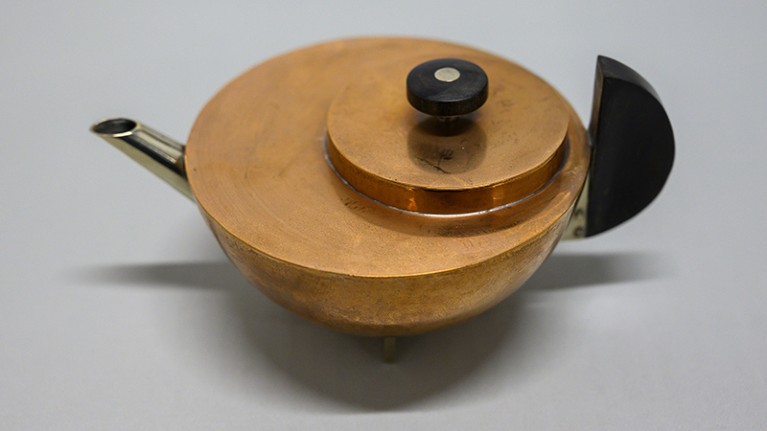
One of industrial designer Marianne Brandt’s geometric teapots.Credit: John MacDougall/AFP/Getty
When he opened the Bauhaus in April 1919, Gropius brought in Swiss designer Johannes Itten, who trained incoming students rigorously in materials, composition and colour. Itten theorized a science of colour contrast that depended on seven variables, including temperature and saturation, influenced by the colour theories of two nineteenth-century scientists: French chemist Michel Eugène Chevreul and German polymath Johann Wolfgang von Goethe. In 1920, Itten persuaded the artists Georg Muche and Paul Klee to join the school’s teaching roster.
Itten was also a devotee of Mazdaznan, a movement loosely based on the teachings of ancient Persian prophet Zoroaster. Fomenting a revolution very different from the one Gropius sought, he ‘converted’ a number of students to a strict regime of fasting and head-shaving. By 1923, Gropius had replaced him with the Hungarian artist and photographer Lázló Moholy-Nagy.
Industrial optimist: Moholy-Nagy revisited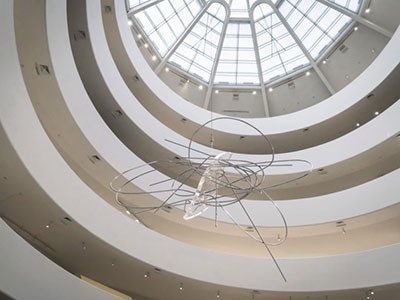
A dedicated experimentalist, Moholy-Nagy was struck by Albert Einstein’s explosive new physics, and compelled by optics and the perception of motion, space and time. He would later engineer mechanized, moving sculptures such as the 1930 Light Prop for an Electric Stage, and produce books juxtaposing scientific images made using microscopes and telescopes with reproductions of artworks. Moholy-Nagy sculpted, too, using Plexiglas and other modern materials.
Another scientifically oriented artist, Wassily Kandinsky, joined the faculty in 1922. A Russian pioneer of abstraction, he had been deeply affected by Ernest Rutherford’s discovery of the atomic nucleus in 1911. That vast shake-up in understanding of the cosmos led Kandinsky to ponder how to capture the protean nature of material reality, and fed into his ideas on abstraction. He also collected scientific images of microbes, embryos and insects, which inspired biomorphic forms in many of his paintings.
Shadow of light
Women hugely advanced innovation at the school. Industrial designer Marianne Brandt crafted sleekly geometric houseware and furniture, and eventually became head of metalwork. Photographer Lucia Moholy, née Schulz, who married Moholy-Nagy in the 1920s, co-created photograms with him through an intricate process involving exposing objects on light-sensitive paper. Anni Albers (née Fleischmann), who met and married glass artist and teacher Josef Albers at the school, explored grid patterns and colour in striking wall hangings. She was joined by many other notable textile designers at the Bauhaus, including Otti Berger and Gunta Stölzl.
The school itself struggled with financial crises and government disapproval. In 1925, it moved to Dessau. Architect and master of rectilinear form Ludwig Mies van der Rohe took over as head in 1930, but two years later the right-wing local government forced it to close. After a final desultory year in Berlin, the Gestapo padlocked the doors in 1933 and the school’s great stalwarts moved on. By then, Bauhaus products had been exhibited from India to the United States, and its publications— such as Gropius’s 1925 International Architecture — had galvanized Dutch and Scandinavian design.
Science in culture: Bauhaus at the zoo
Within a few years, Gropius, Moholy-Nagy, Mies and the Albers fled Germany, eventually settling in the United States and spreading Bauhaus concepts to a new generation. Gropius taught at the Harvard Graduate School of Design in Cambridge, Massachusetts. Moholy-Nagy and Mies moved to Chicago, Illinois, where they headed the School of Design and the Illinois Institute of Technology’s school of architecture, respectively. Josef Albers, invited to direct the new Black Mountain College in North Carolina, trained radical young artists including Robert Rauschenberg and Ruth Asawa. Anni Albers, who also taught at the college, gained renown as a textile designer and graphic artist. Klee and Kandinsky stayed in Europe, making art of staggering beauty. Their collective influence remains profound.
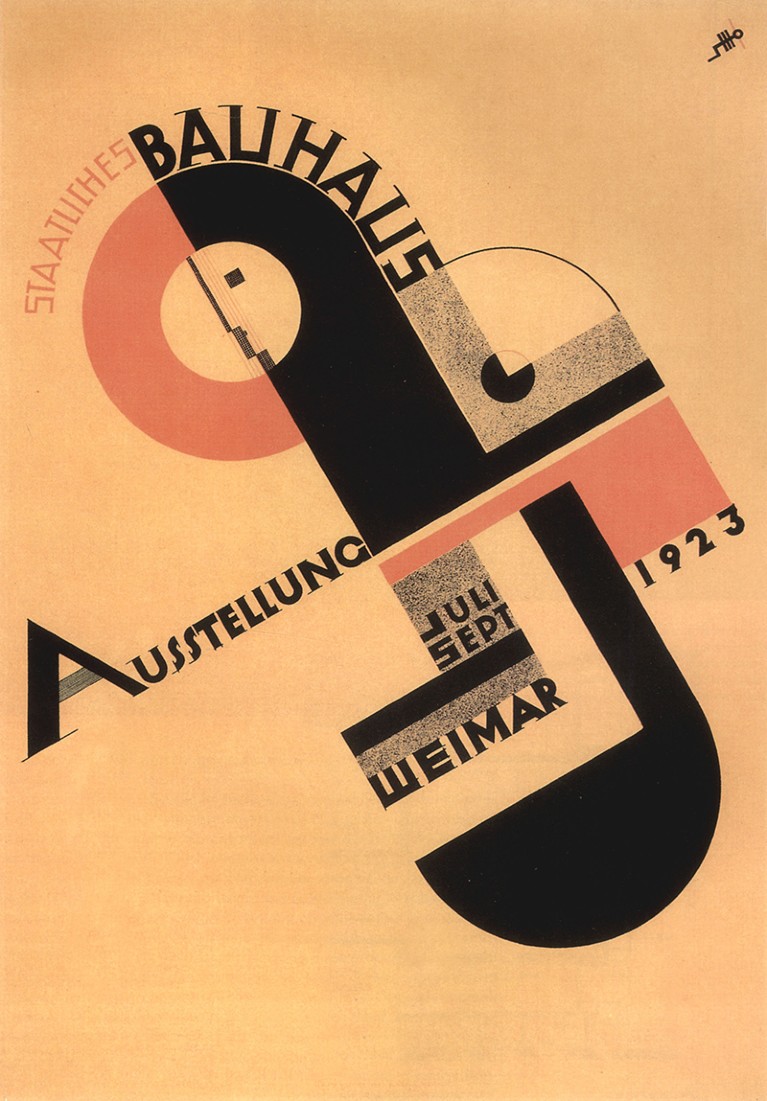
A poster for a 1923 exhibition of Bauhaus work, created by graphic designer Joost Schmidt.Credit: Apic/Getty
But what of the triangle, square and circle one sees on posters, book covers and websites commemorating the Bauhaus in this centenary year? German art historian Wilhelm Worringer, whose 1908 book Abstraction and Empathy was a major influence on the Bauhaus, called abstract shapes “the life-denying inorganic”. Far from pejorative, the term revealed how the Bauhaus vision found continuity and beauty in unprecedented forms, its systems and symbolism linking the natural and engineered worlds.

Anni Albers used patterns influenced by nature in her abstract wall hangings.Credit: AP/Shutterstock
Natural patterns also figured profoundly, not least in the work of Anni Albers. Although swayed by Worringer’s ideas, she revered Goethe, whose book Metamorphosis of Plants (1790) led to a fascination with botanical structure. Goethe recognized that all the parts of a flower, from pistil to sepal, are modified leaves. The leaf is thus the ‘germ’ of botanic metamorphosis. This became the guideline for Albers’s abstract wall hangings: the first few rows in the woven piece determined the pattern of the rest. She constructed her textiles in adherence to Goethe’s conception of nature’s consistencies of growth and form.
Klee, briefly her teacher, shared Albers’s veneration for nature. In a lecture, he described artists as organizing “the passing stream of image and experience” like the trunk of a tree: “From the root the sap flows to the artist, flows through him, flows to his eye.” He was beguiled by fluid dynamics. His notebooks The Thinking Eye and The Nature of Nature, published in the early 1920s, are essentially treatises on topics such as geometry, perspective and motion. As he wrote in 1929: “Studies in algebra, in geometry, in mechanics characterize teaching directed towards the essential and the functional ... One learns to look behind the facade, to grasp the root of things. One learns to recognize the undercurrents, the antecedents of the visible.” Only someone attuned to the music of Johann Sebastian Bach could express this approach so exquisitely. Through experimentation and repetition of motifs, underpinned by mathematics, Klee — like Bach — blended the poetic with the systematized.
The Bauhaus artists found their powerful aesthetic in a geometry beyond the forms of nature, in a patently engineered distillation of colour. But these open-minded visionaries were never disconnected from the wonders of life itself. Their art celebrated natural miracles in new ways.
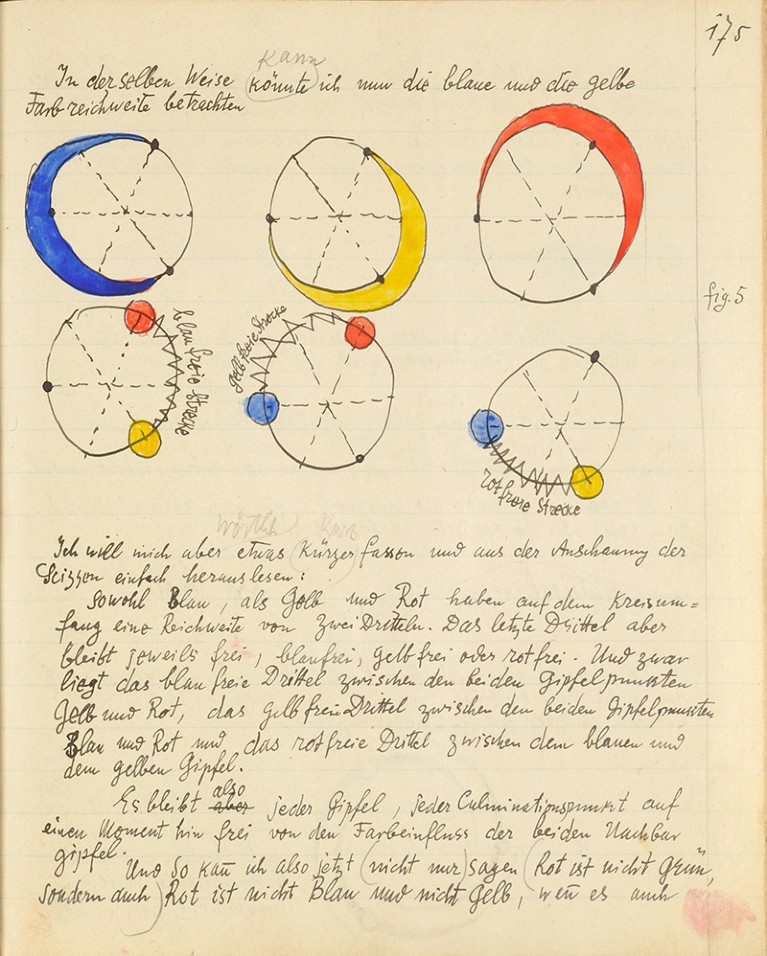
A page from Beiträge zur bildnerischen Formlehre (Contributions to the theory of pictorial form) by Paul Klee.

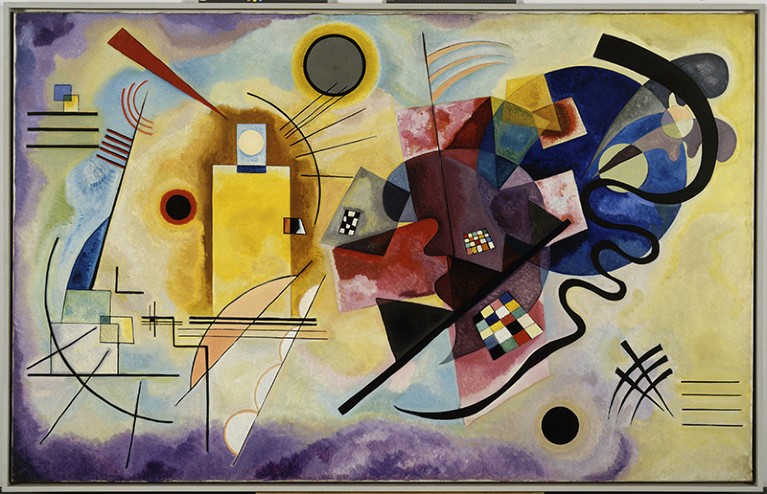
 Industrial optimist: Moholy-Nagy revisited
Industrial optimist: Moholy-Nagy revisited
 Eco-engineering: Living in a materials world
Eco-engineering: Living in a materials world
 Science in culture: Bauhaus at the zoo
Science in culture: Bauhaus at the zoo
 The art of engineering: 9 Evenings revisited
The art of engineering: 9 Evenings revisited





